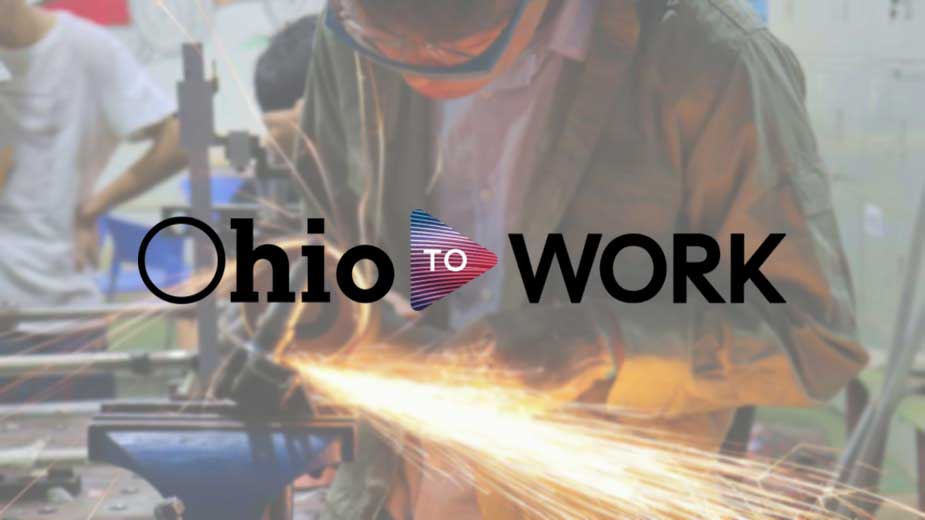YOUNGSTOWN, Ohio – Local partners in the recently concluded Ohio To Work initiative are taking steps to continue the collaborative effort, having exceeded the local goals set for the program.
Initially launched in Cleveland in September 2020 to address job losses resulting from the COVID-19 pandemic, the initiative was expanded to the Mahoning Valley, Columbus, Toledo, Cincinnati and Dayton a year later. The campaign brought together partners from across the workforce spectrum, including employers, training providers and local workforce development organizations.
“It was definitely a success. The numbers speak for themselves,” said Jessica Borza, executive director of the Mahoning Valley Manufacturers Coalition. MVMC was the operations manager for Ohio To Work’s Mahoning Valley effort, which covered Mahoning, Trumbull and Columbiana counties.
During JobsOhio’s board meeting March 2, Gov. Mike DeWine and JobsOhio officials recapped the success of the program, which was created to help people who lost their jobs in industries such as restaurants and those who were at-risk of displacement because of the COVID-19 environment.
“The pandemic forced all of us to think in new and different ways to help improve the lives of Ohioans whose jobs were at risk because of the uncertainty of the pandemic’s effect on the economy,” DeWine said.
Statewide, the program served 211,365, or more than three times the goal. Similarly, 19,192 job seekers enrolled in reskilling, or nearly four times the goal set for the program, and 26,114 job seekers were placed in positions, nearly double the goal.
“This bold investment in people was designed to reskill and upskill Ohio’s displaced workers and match them with employers who needed hard-working people to fill critical roles,” J.P. Nauseef, JobsOhio president and CEO, said. “Together, we laid a strong foundation to build a talent network across the state that will endure and bolster the success of our state’s resilient economy.”
The Mahoning Valley initiative similarly exceeded goals.
Ohio To Work served 34,514 individuals in the three counties, far above the 2,000 target, Borza said. Of those, 1,617 enrolled in training programs, more than triple the goal of 500 and 1,715 received job offers during the initiative, about 76% above the target of 1,000.
“What JobsOhio did with this investment was encouraged us to think completely outside the box,” Borza said. “By allowing us to think creatively and work together differently, we were able to exceed those metrics.” The state investment gave local Ohio To Work partners “space for us to come together” and “think differently about how we work together and what we do to support job seekers and employers.”
Employers participating in the local initiative had to be in the manufacturing, information tech-nology and health care sectors, said Melissa Maiorano, director of workforce development at the Youngstown/Warren Regional Chamber.
Other local partners included Professional Development Center/Flying High, OhioMeansJobs Mahoning and Trumbull counties, United Returning Citizens, National Center for Urban Studies and OhioMeansJobs Trumbull County.
The Regional Chamber supported business engagement for the local Ohio To Work initiative and assisted with networking, supporting at least four hiring events through last December, Mariorano said. The local partners “tag-teamed” the effort to connect job seekers in the community to the initiative’s resources.
“It definitely sparked great partnerships and collaboration amongst the education institutions and nonprofits that participated,” Mariorano said.
“I would say that we had great impact bringing attention that there are jobs available in this area, and there are excellent training opportunities,” she added.
“It was very successful,” affirmed Melissa Alfano, youth services coordinator with Mahoning & Columbiana Training Association, one of the job coaches who participated in the local Ohio to Work initiative.
“It was nice to be able to get to know and build relationships with other agencies to best serve the community. That was a very important part of all of it,” Alfano said. “That way we could really work and collaborate together.”
Resource providers and participants met in person as well as virtually, Alfano said.
One of the programs that the initiative offered was YouScience, an online aptitude assessment tool, or “90 minutes of investing in themselves,” as she put it. The assessment can be completed over several sessions and participants will be able to access the program for the next decade.
“It helps build confidence. It helps let individuals become more aware of themselves and their natural abilities,” she said. “It’s nice when you know what’s difficult for you so you can recognize it when you’re in that situation and prepared.”
The collaboration “also gave us great momentum to consider a sustainability plan,” Maiorano said.
Local stakeholders already have started the process of establishing a “regional workforce coalition.” The Regional Chamber, which has applied for a technical assistance grant from the Governor’s Office of Appalachia, is facilitating the effort to create a referral network so that no individual seeking a job or training gets lost in the talent pipeline.
“As we reflected on it, we said that we wanted to make sure that we sustained [the initiative.] We found ourselves working in new and different ways with the chamber and some of the other partners and we want to continue that,” Borza said. Some of that will be done though MVMC but the proposed coalition will be “another venue for those kinds of partnerships to continue to live on and grow,” she added.
“The regional workforce coalition is hoping just to sustain this model, dive into the business intelligence that we’ve received over the course of the past 18 months and consider other sustainability options in terms of funding for an even bigger workforce ecosystem to continue to work together,” Maiorano said.
